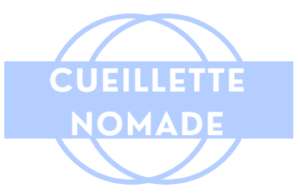Copyright aspects of reproducing artistic works.

Table of Contents
How can you protect your artwork from copyright infringement?
One of the best ways to protect your artwork from copyright infringement is to register your work with the U.S. Copyright Office, or the European Copyright Office if you're based in Europe. You can also obtain a Creative Commons license, which assigns rights and responsibilities for the reproduction and use of your work. You can also add a © or a ™ to your work, which is another measure to protect it from unauthorized use by third parties. Finally, you can provide copyright information on your website if you use these platforms to promote or sell your artistic works.
Respecting copyright laws: Understanding reproduction rights
Copyrights are fundamental rights protected by law, giving an author, composer or artist exclusive rights to his or her works. These rights enable an author to control the reproduction, distribution and commercial use of his or her work. Respecting copyright is important when reproducing an artistic work, to avoid any potential infringement. Anyone wishing to reproduce a work must obtain permission from the author or rights holder, and comply with the conditions laid down by the rights holder in order to make a legal reproduction. It is also important for those wishing to reproduce a work to be aware that they may be held liable in the event of copyright infringement.
Obtain authors' consent to reproduce their works
Copyright regulations require authors to give permission for their works to be reproduced. Artists can demand financial compensation for this permission, and they also have the right to decide how their works are reproduced and distributed. It is important to note that even if you ask for permission, you cannot modify the work or present it under a false name without the author's agreement.
Copyright and digital sharing: how to protect your work?
To protect your work, it's important to register it with the World Intellectual Property Organization (WIPO). This will give you limited protection and enable you to recover copyright in the event of infringement. You can also set up digital rights management systems to control how users can access and use your work. Other strategies include tagging metadata, drafting a contract or using technological tools to prevent unauthorized duplication or modification.
Pitfalls to avoid when reproducing works of art
It is important to respect copyright and not to reproduce or distribute a work without the explicit authorization of its author. In some cases, special licenses are required to reproduce or use an artistic work. These licenses vary from country to country, depending on the regulations in force. It is therefore important to check the applicable legislation when reproducing an artistic work.
Understanding the risks of copyright infringement
It's important to understand the risks associated with copyright infringement. Copyright infringement can lead to severe legal consequences, including the extraction of substantial amounts in damages, as well as the payment of heavy fines. In addition, unauthorized reproduction of intellectual property can result in loss of credibility or damage to the reputation of the company or individual responsible. In addition, copyright owners can initiate civil and criminal proceedings against offenders. Finally, copyright infringement can result in a temporary or permanent ban on the infringer reproducing or distributing any protected intellectual property.
Using protected works: what are your responsibilities?
Responsibilities include:
- Respect applicable copyrights and obtain the necessary authorizations to reproduce a protected work;
- Ensure that the work is used in accordance with the limitations and exceptions attached to a protected title;
- Ensure that the copyright holder is recognized as the author of the work and receives fair remuneration for the use of his or her work;
- Respond to any request or complaint concerning the illicit use of the work.
What are the criteria for using copyrighted works?
This includes author consent, licensing conditions and respect for moral rights. Limitations on copyright duration and exceptions to regulation must also be taken into account. It is also important to research the rights applicable to copyrighted works, to avoid any infringement of the law.
Explanation of the concept of moral rights and property rights
Moral rights and economic rights are two different concepts linked to copyright. Moral rights are a legal concept that protects the interests of the author of a work by giving him or her exclusive control over what is done with the work. This control includes the ability to decide if and how a work will be published or modified, as well as the possibility of receiving royalties for any reproduction or commercial use of the work.
The economic right is a broader set of rights linked to a work. It grants the author the exclusive right to use and/or modify his work, as well as the exclusive right to obtain financial compensation for its reproduction or commercial use. It also protects the work against infringement of its authorship (plagiarism) and against unfair and/or parasitic competition (unlawful use).
